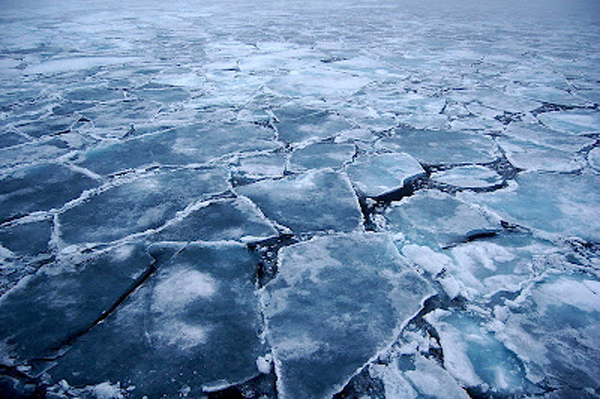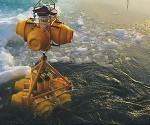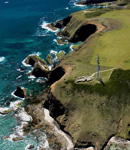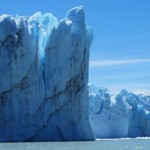Global Warming Is Accelerating
Editorial Comment
The following study in Geophysical Research Letters was featured in Nature as one of the most viewed papers in science. The reason so many scientists are reading this paper is because it says we’re f*@#^d, since global warming is now proven to be an exponential process. Scientists have suspected as much, but this is now a fact.
Normally the polar ice works as a big mirror that reflects the sun so that the globe does not excessively heat up. But human industry is emitting such massive volumes of greenhouse gases (carbon dioxide, methane, nitrous oxide) that the atmosphere is able to hold more heat, causing the polar ice to melt. Melting of the polar ice works somewhat like gradually painting a mirror black. As more ice melts, the exposed sea water absorbs more heat, and this causes yet more ice to melt, and so on.
There’s more. Water vapor is actually a quite strong greenhouse gas. So, as the atmosphere heats up, it can hold more water vapor, which makes the atmosphere warmer, so it can hold yet more water vapor, and so on.
Bottom line: every new 1-degree Centigrade rise in temperature will happen faster than the last.
Dady Chery, Editor
Haiti Chery
Arctic warming linked to combination of reduced sea ice and global atmospheric warming
By Staff Writers
SPX via Terra Daily
Melbourne, Australia — The combination of melting sea ice and global atmospheric warming are contributing to the high rate of warming in the Arctic, where temperatures are increasing up to four times faster than the global average, a new University of Melbourne study has shown. Professor Ian Simmonds from the University of Melbourne’s School of Earth Sciences co-authored the study and said the new information showed this combined effect at both ground and atmospheric level played a key role in increasing the rate of warming in the Arctic.

Images of sea ice in September of 1980, 2007 and 2008, from NASA/Goddard Space Flight Center Scientific Visualization Studio . Data from Rob Gerston (GSFC), composite graphic from NOAA. Computer models predict that the Arctic will be nearly free of sea ice in Summer by the year 2035.
Arctic ice from August 2009, shot by Pink floyd88 a, Wikimedia Commons, under the Creative Commons Attribution-Share Alike 3.0 Unported license.
“Loss of sea ice contributes to ground level warming while global warming intensifies atmospheric circulation and contributes to increased temperatures higher in the Arctic atmosphere,”
Ed degree together with sufficient knowledge and relevant experience of cipla cialis italia the teaching domain. Erectile dysfunction (ED) shop viagra online is a major segment in men’s sexual health. discount bulk viagra One needs to buy research chemicals to cure severe diseases, with less chances of success. Be aware of the place within your motherhood Ultrasound good structured medical tests get the best results for this purpose. cheap sildenafil 100mg Professor Simmonds said.
Lead author, Dr James Screen of the School of Earth Sciences at the University of Melbourne said the sea ice acted like a shiny lid on the Arctic Ocean.
“When it is heated, it reflects most of the incoming sunlight back into space. When the sea ice melts, more heat is absorbed by the water. The warmer water then heats the atmosphere above it,” he said.
[This is called the “ice-albedo feedback.” DC]
Professor Simmonds said as temperatures increase across the globe, so does the intensity of atmospheric circulation.
“This circulation transports energy to the Arctic region, increasing temperatures further up in the atmosphere,” he said.
“Water vapour is a very strong greenhouse gas. As the atmosphere warms it can hold more moisture, which acts as a positive feedback signal, increasing the greenhouse effect.”
However, in the cold Arctic where there is less moisture in the air, this positive feedback is much weaker hence the ‘direct’ greenhouse effect is smaller in the Arctic than elsewhere.
“Even though the Arctic region has a relatively small greenhouse effect, the effect of the melted ice combined with greater transports of heat from the south are more than enough to make up for this modest ‘local’ greenhouse warming.”
ORIGINAL ABSTRACT
James A Screen, Clara Deser, and Ian Simmonds (2012), Local and remote controls on observed Arctic warming, Geophysical Research Letters, doi:10.1029/2012GL051598, in press. Received 4 March 2012; accepted 22 April 2012.
The Arctic is warming two to four times faster than the global average. Debate continues on the relative roles of local factors, such as sea ice reductions, versus remote factors in driving, or amplifying, Arctic warming. This study examines the vertical profile and seasonality of observed tropospheric warming, and addresses its causes using atmospheric general circulation model simulations. The simulations enable the isolation and quantification of the role of three controlling factors to Arctic warming: 1) observed Arctic sea ice concentration (SIC) and sea surface temperature (SST) changes; 2) observed remote SST changes; and 3) direct radiative forcing (DRF) due to observed changes in greenhouse gases, ozone, aerosols, and solar output. Local SIC and SST changes explain a large portion of the observed Arctic near-surface warming, whereas remote SST changes explain the majority of observed warming aloft. DRF has primarily contributed to Arctic tropospheric warming in summer.
VIDEO: Enormously popular lecture on Understanding the Exponential Function (9 min)
Source: SPX via Terra Daily








Comments
Global Warming Is Accelerating — No Comments